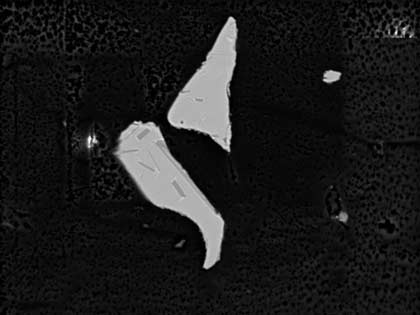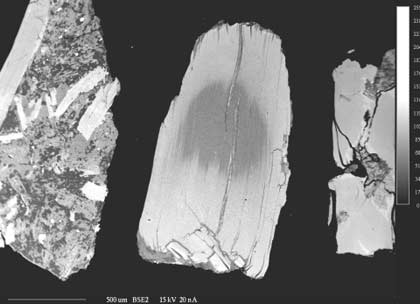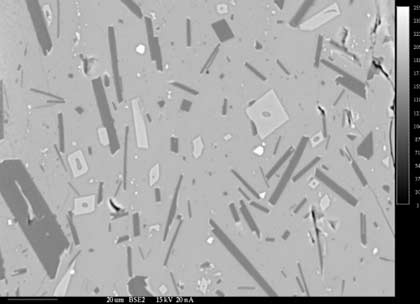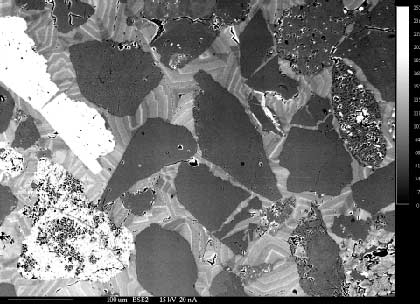
Backscattered Electron Images
Backscattered electron images can be generated from samples with relatively smooth surfaces, as opposed to secondary electron image that rely on sample roughness to produce an image. Backscattered electrons are high-energy electrons that rebound from the sample surface. The quantitity of electrons backscattered from a given surface is proportional to the mean atomic number (Z) of the sample material. Hence, a high mean Z material will produce more backscattered electrons than a low mean Z one. In the sample shown below, the brightest areas are magnetite, a high Z Fe oxide. The next brightest areas are pyroxene crystals that contain Fe, but also lower Z elements, such as Si, the medium grey areas are volcanic glass, and the darkest grey areas are feldspar.
More backscattered images:
Volcanic ash shards from the Siple Dome icecore (Antarctica)
Field of view = 100 microns

Chemically zoned biotite crystal

Link to an image of altered volcanic feldspar
Back to: what is a microprobe?




